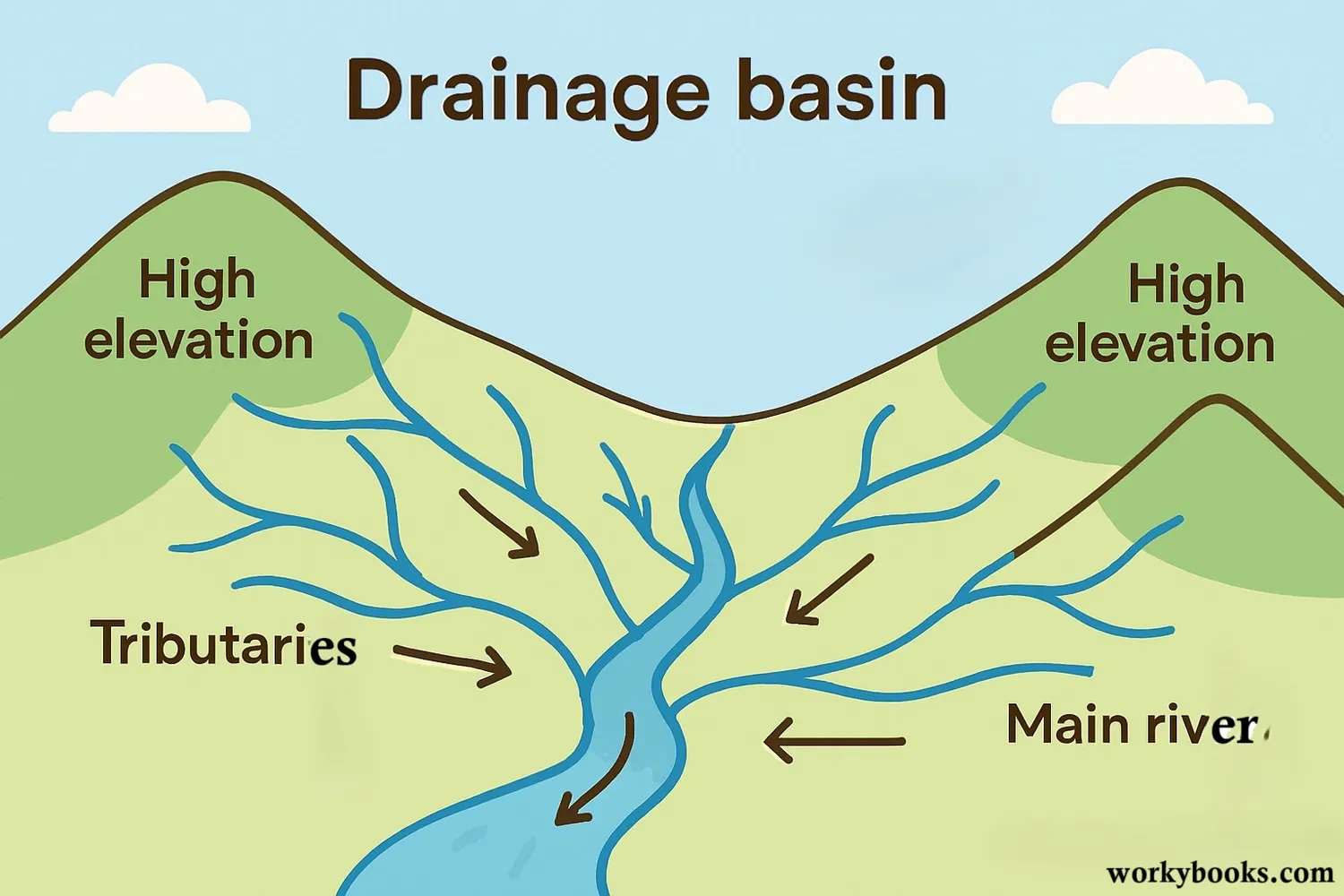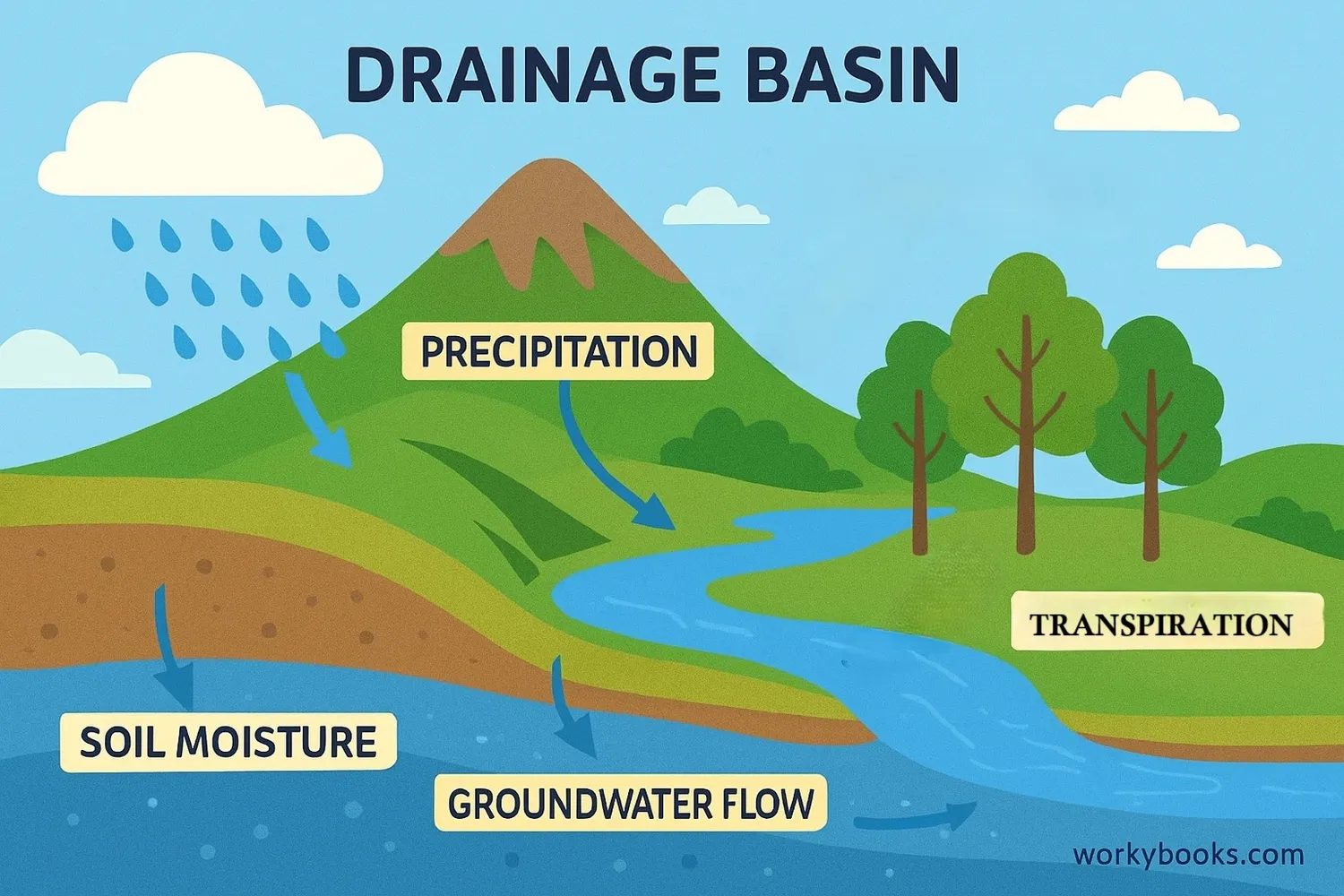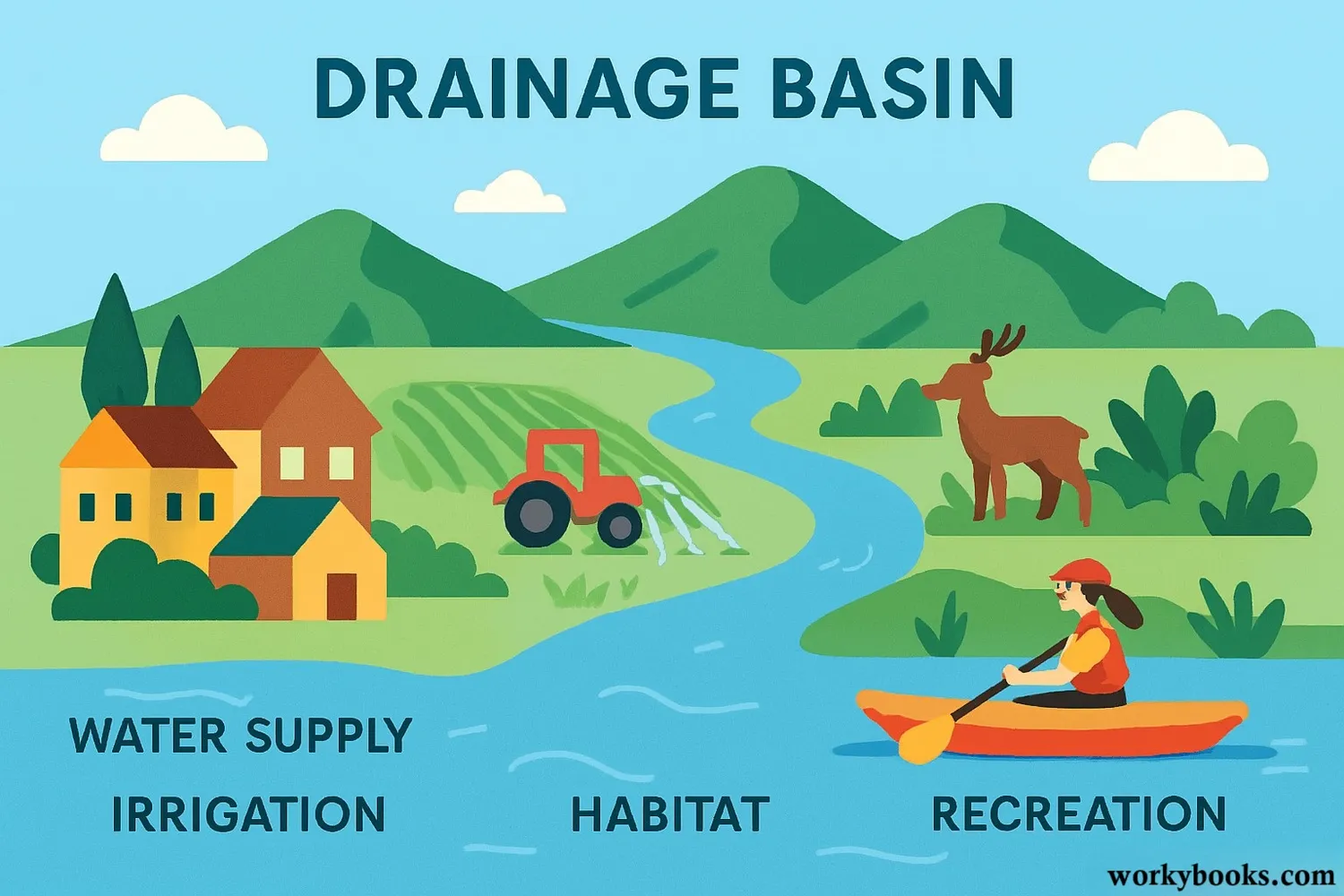Drainage Basins - Definition, Examples, Quiz, FAQ, Trivia
Learn how water flows across the land and shapes our environment
What is a Drainage Basin?

A drainage basin is an area of land where all precipitation (rain, snow, sleet) that falls within it drains to a common outlet, usually a river, lake, or ocean. It's like a giant bowl that collects water and sends it all to the same place!
Think of a drainage basin as nature's water collection system. When it rains, water flows downhill, following the shape of the land. Small streams join together to form larger rivers, all moving water toward the basin's lowest point. This entire area is also called a watershed or catchment area.
Key Term: Watershed
The term "watershed" refers to the dividing line between different drainage basins, often following the highest points in the landscape.
How Drainage Basins Work

Drainage basins work through the natural processes of the water cycle. Here's how water moves through a drainage basin:
Precipitation
Rain or snow falls on the land within the basin
Collection
Water flows downhill, following the land's shape
Convergence
Small streams join to form larger rivers
Outlet
All water eventually reaches a common outlet
The boundary between different drainage basins is called a topographic divide. This is usually a ridge or area of higher ground that separates water flowing toward different river systems.
The size of drainage basins can vary greatly. Some are small, collecting water from just a few acres, while others are enormous, like the Amazon River basin which collects water from over 2.7 million square miles!
River Network
Within a drainage basin, smaller streams called tributaries flow into larger rivers, creating a branching network that resembles the veins in a leaf.
Importance of Drainage Basins

Drainage basins are essential for many aspects of our environment and daily lives. Here's why they're so important:
Water Supply
Provide drinking water for communities and irrigation for agriculture
Ecosystem Support
Create habitats for diverse plants and animals
Natural Filtration
Filter and purify water as it moves through the basin
Understanding drainage basins helps us:
• Predict flooding patterns
• Manage water resources effectively
• Protect water quality
• Plan sustainable communities
• Conserve natural habitats
Drainage basins connect all living things within them. What happens in one part of a basin affects everything downstream, which is why watershed management is so important for environmental health.
Drainage Basin Quiz
Test your knowledge about drainage basins with this quiz! Answer all 5 questions to see how much you've learned.
Frequently Asked Questions
Here are answers to some common questions about drainage basins:
Interesting Drainage Basin Facts
Discover some fascinating facts about drainage basins:
Continental Divide
In North America, the Continental Divide determines whether water flows to the Pacific Ocean or the Atlantic Ocean. Rain that falls just inches apart on either side of this divide can end up in different oceans!
Ancient Rivers
Some river systems and their drainage basins are incredibly old. The Nile River system is estimated to be at least 30 million years old, making it one of the oldest drainage systems on Earth.
Underground Basins
Not all drainage is visible on the surface! Some areas have underground drainage basins where water flows through porous rock or cave systems before emerging at springs.
Urban Drainage
In cities, natural drainage basins are often altered with storm drains and sewer systems. This can cause problems during heavy rain when too much water flows too quickly into waterways, increasing flood risk.


